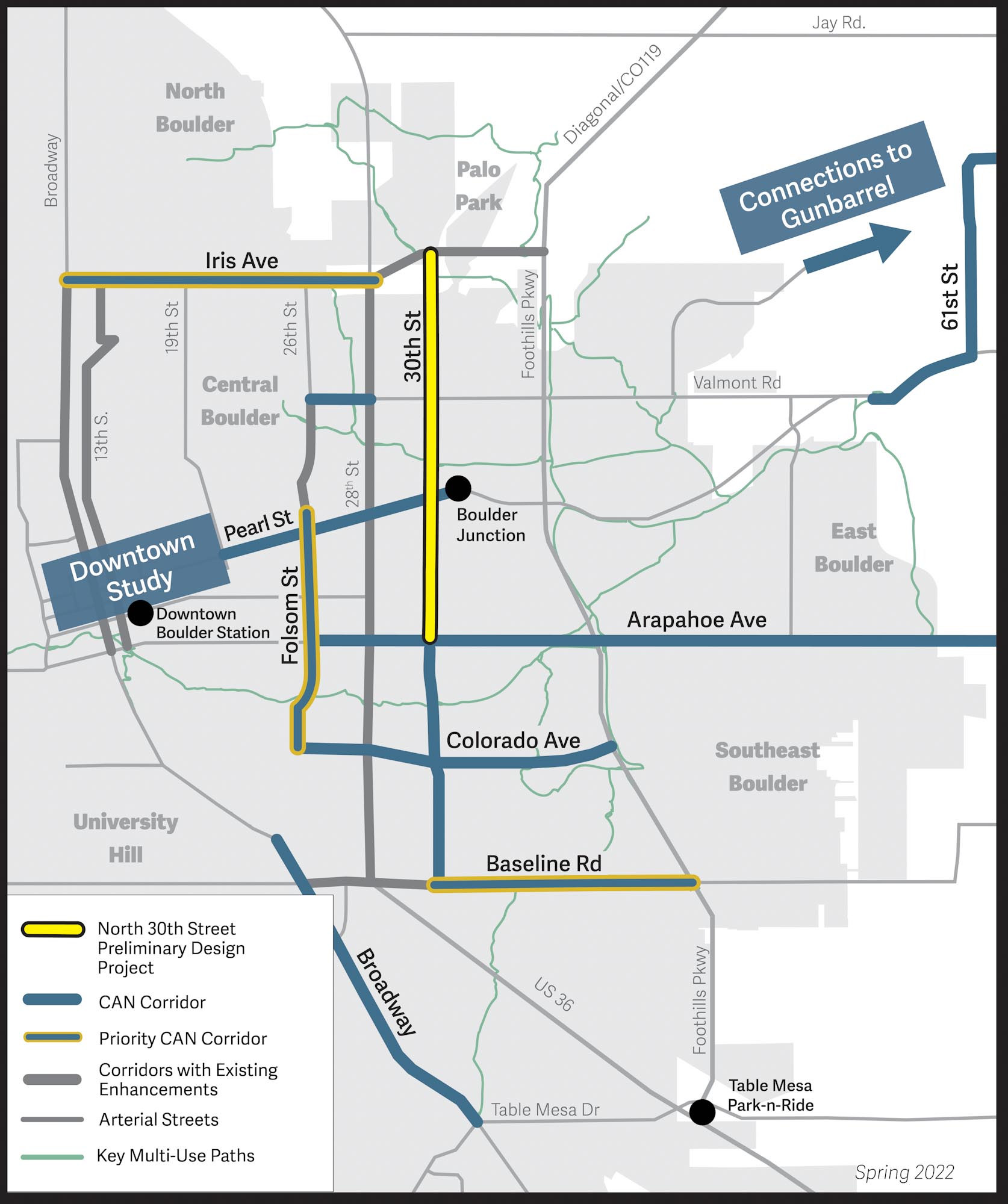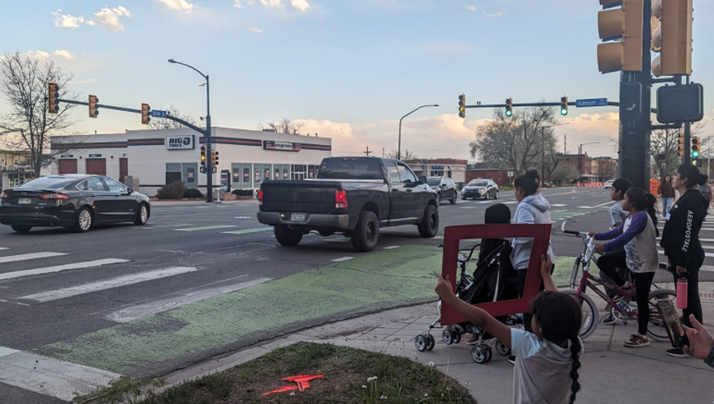Project Overview
30th Street is a north-south arterial street that provides important connections for multimodal travel — walking, biking, taking the bus and driving.
Today, conflicts between different ways of travel are causing delays for buses and serious safety hazards for people walking, biking and driving on north 30th Street.
By redesigning the street to balance the needs of all travelers, we can create a safer, more efficient street, ensuring smoother commutes for everyone.
This project will collaborate with the diverse community members living, working, and traveling on 30th Street to inform a preliminary design that makes 30th Street between Arapahoe Avenue (CO 7) and Diagonal Highway (CO 119) safer and more connected for all travelers.




